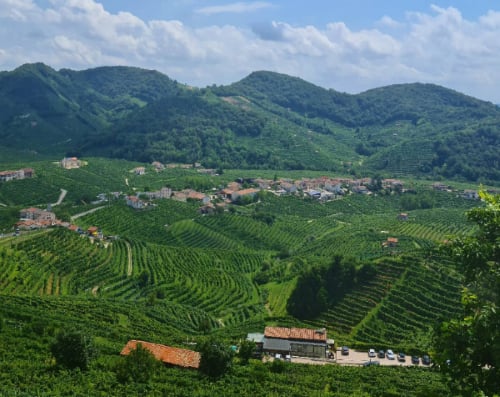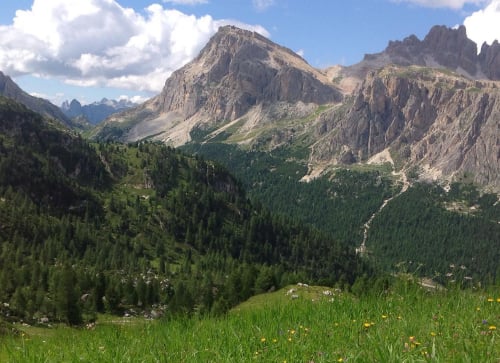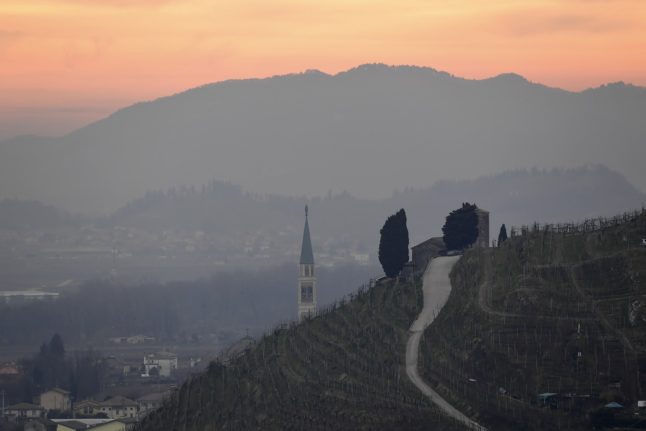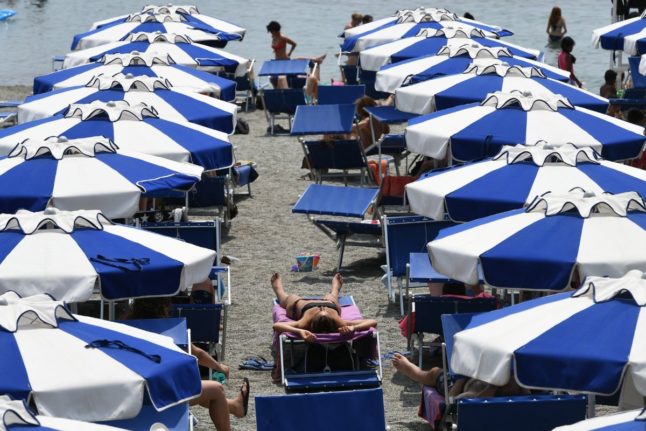Tucked in the North-East corner of Italy, lies Veneto, an Italian region spanning from the Dolomites in the North to the Adriatic in the East. This history-saturated region is perhaps best known for otherworldly Venice and romantic Verona which is just under an hour’s reach of Lake Garda.
Veneto consistently tops the list of Italy’s most-visited regions. In a recently published report by statistics agency Istat and Italy’s tourism ministry, Veneto had 71.9 registered overnight visitors last year, which was around 16 million more than runner-up Trentino-Alto Adige.
READ ALSO: 16 alternative places to visit in Lazio other than Rome
But what lies beyond the famous sights of Venice, Verona, and Lake Garda? We’ve divided the region into its seven provinces and looked at where’s best to go in each of them.
Metropolitan City of Venice
The surrounding areas of La Serenissima should not be missed, especially if you are planning on spending a long summer in the region; there are a few beaches here that should not be missed such as Caorle and Jesolo.
Caorle is a colourful, compact beachside town, and Jesolo offers something for all ages on its long stretch of sand, whether that be beach clubs such as Capannina or water park Caribe Bay.
MAP: Which regions in Italy have the most Blue Flag beaches in 2024?
While they may not be as stunning as the crystal clear waters of Sardinia, they are both blue-flag beaches boasting excellent services.
For those seeking a quieter, less-crowded Venice, try its carbon copy, Chioggia. This small fishing town isn’t as grand as Venice, but it still has canals and bridges with a backdrop of the sea. The food is a bit more authentic and definitely cheaper.
Province of Treviso
Treviso city itself deserves a special mention here. The town is (debatably) the homeplace of tiramisu and the world championships are held there every year. The famous layered dessert was said to first be invented in the kitchen of Le Beccherie, a restaurant near the central piazza.
Other places in the province include Asolo and Valdobbiadene. Asolo is a small hilltop town with wonderful views of greenery below it. It’s often cited as one of the most beautiful villages in Italy.
Valdobbiadene on the other hand is prosecco vineyard after prosecco vineyard. Tours and tastings are easily arranged. A favourite haunt to frequent is Osteria Senz’oste, a self-serve charcuterie and prosecco place with seats overlooking i vigneti.
Possagno is also a place you shouldn’t miss if you enjoy works by sculptor Antonio Canova; the town was his birthplace after all.

Province of Belluno
Like Treviso, the city of Belluno is well worth a visit, especially for those who like cities surrounded by nature. But it’s the nature itself in this province that gets people talking.
Take Lake Sorapis for example, with its icy turquoise waters, or the Cinque Torri, a rock formation in the Dolomites that has good walking routes and marvellous views.
The famous winter sports resort of Cortina d’Ampezzo is another town in this area to check out,especially for skiers.
If you like looking at mountains but not walking up them, try going to the forest and plains of Cansiglio – but be careful as wolves were spotted there not so long ago.
Province of Vicenza
The namesake of this province, Vicenza, has wonderful architecture designed by Andrea Palladio throughout. Landmarks to check out include the Olympic Theatre, the Basilica of St. Mary of Mount Berico and the Palladian Basilica.
Venture further out, and Bassano del Grappa, Asiago and Marostica are all places you shouldn’t miss.
As the name suggests, Bassano del Grappa is famous for the spirit grappa. There are distilleries in the town but perhaps the most beautiful feature is the alpine bridge designed by the aforementioned Palladio.
Asiago is a town famous for its cheese, and not only. The town is lively, especially during the Christmas period, and is also known for its large war memorial.
Lastly, Marostica is perfect for chess lovers. Every September a game of chess is played in the principal square with human pieces. The tradition is supposed to have started in 1454 and it’s a very unique event to go to in Italy.
Province of Verona
Though Verona city and Lake Garda take up a huge chunk of what to see in this province, there are other small gems too. Borghetto Sul Mincio is a wonderfully quaint waterside village perfect for those seeking something a bit more rustic.
Madonna della Corona sanctuary is also not to be missed. It lies in the heart of the Baldo rocks and is perhaps one of the most picturesque churches in Italy.
If red wine is your passion, go to the Valpolicella zone to try out the different wines in the plentiful cellars.
And finally Soave has an impressive mediaeval castle you can walk around.

Province of Padua
Padua, a city known for its university, has many treasures such as Prato della Valle, St Anthony’s church, and most importantly, the Scrovegni Chapel. It often gets overlooked on the common journey between Verona and Venice.
In terms of towns in the province, Este and Cittadella are worth visiting for their churches and city walls respectively.
The Euganean hills also have plenty to do in them, such as walks in nature. Popular spots are Arquà Petrarca, a town named after the famous poet and Abano Terme, a town locally popular for its range of hot springs.
Province of Rovigo
Rovigo is just on the cusp of Veneto and is very close to Emilia-Romagna. The city isn’t as grand as some in the other provinces, but it does have a few nice areas to check out around it, such as the Po Delta National Park, which is great for birdwatching.
Do you have a favourite place in Veneto that’s not listed here? Let us know in the comments below.



 Please whitelist us to continue reading.
Please whitelist us to continue reading.
We very recently covered many places on your list such as, Bassano del Grappa, Marostica, Borghetto Sul Mincio, Cittadella, Padua, Spiazzi (Madonna della Corona Sanctuary), Chioggia, Treviso & Vicenza. Absolutely loved Vicenza (was clear favourite), Marostica, Spiazzi, Borghetto Sul Mincio & Chioggia. Asolo, Soave & Possagno were on our list but unfortunately didn’t get them. Castelfranco Veneto while not a favourite is more than worthy of a visit.